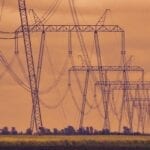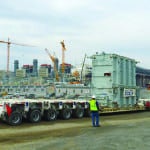President Trump on May 1, 2020, issued Executive Order (EO) 13920, titled “Securing the United States Bulk-Power System.” Trump said that the unrestricted foreign supply of certain electric equipment constitutes an “unusual and extraordinary threat to the national security, foreign policy, and economy of the United States” and declared a national emergency with respect to the U.S. “bulk-power system.”
COMMENTARY
The EO prohibits U.S. persons from initiating transactions to acquire, import, transfer, or install “bulk-power system electric equipment” that was designed, developed, or manufactured by a “foreign adversary,” where the U.S. Department of Energy (DOE) has determined that the transaction poses an undue risk to the nation’s electric grid, critical infrastructure, or economy. While the EO applies to equipment from a number of countries, it is generally viewed as primarily directed at China.
The electric industry has expressed concern about the potential scope of the order, especially given the lack of generally accepted, granular definitions of the terms “bulk-power system” and “bulk-power system electric equipment.” While the EO does not apply to distribution facilities or transmission facilities rated below 69 kV, its applicability to other components of the grid, including utility-scale renewable and energy storage projects, is less than clear.

The DOE has sought to assure stakeholders that it will implement the EO “surgically,” and is not seeking wholesale replacement of components on the nation’s electric grid. Nevertheless, a number of stakeholders have expressed concern that the lack of specificity as to what components could be subject to the EO’s restrictions is already having a chilling effect on investment and procurement decisions. This concern is underscored by the fact that the EO suggests that existing electric infrastructure that places the bulk-power system at risk is also subject to isolation, monitoring, or replacement.
The DOE, tasked by the administration with leading a multiagency effort to develop implementing regulations for the order, on July 8 published a Request for Information (RFI) seeking details about the electric industry’s current cybersecurity and supply chain practices. Almost 100 comments were filed in response to the RFI, and they provide valuable insight into the industry’s existing practices, including enterprise risk assessment programs, cybersecurity best practices, current standards, and programs that can be used by the DOE in developing regulations (including those of the North American Electric Reliability Corp., responsible for the reliability of the U.S. transmission grid), and potential supply chain risks from sub-tier suppliers.
A number of the comments also address an issue that was not expressly raised in the RFI—namely, what categories of “bulk-power system electric equipment” are subject to the EO. The Solar Energy Industries Association (SEIA) noted that the ambiguity of the scope of the order is “hampering investment today,” and asked the DOE to make clear as soon as possible “what components or suppliers pose unacceptable threats to national security, and what equipment may be safely purchased and installed.” The Business Council for Sustainable Energy (BCSE) noted the RFI provides some clarity, but said “concern remains that the [EO] creates substantial uncertainty in the sector due to its far-reaching implications.” The group warned that, “[w]ithout timely clarifications, the [EO] could result in delay or cancellation of equipment orders as well as impede investment in energy projects and infrastructure.” Other commenters echoed the concern that uncertainty in the supply chain resulting from the lack of DOE guidance on the definition of “bulk-power system electric equipment” will cause delays, and increase the cost of infrastructure projects.
Some commenters suggested the DOE could provide more clarity by expressly excluding equipment that does not have the communications capabilities necessary for it to be exploited by a foreign adversary. Securing America’s Future Energy, a nonpartisan, not-for-profit organization focused on energy security, noted the concern “that the government [through the order’s implementation] might inadvertently prohibit some equipment or components that do not pose a security threat [for example, that lack ‘intelligence,’ connectivity, or telemetry] from being imported.” Similarly, SEIA encouraged the DOE to conclude that equipment that contains no bidirectional communications capabilities, such as photovoltaic modules and certain inverters, does not pose an undue risk to the grid. Sungrow Power Supply took a similar approach, asking the DOE to categorically exclude products that “do not constitute a threat to the United States’ safety and well-being,” such as inverters and energy storage solutions without a supervisory control and data acquisition (SCADA) system.
As demonstrated in the comments to the RFI, the industry will be evaluating whether the DOE proposal provides sufficient guidance as to the scope of the EO—in particular, with respect to the definition of “bulk-power system electric equipment”—to minimize unnecessary supply chain disruptions. The proposal could provide some comfort to the industry as to broad categories of equipment that are excluded from the EO. It is more likely, however, that the DOE will propose administrative processes for determining approved components and/or vendors, in which case the industry will need to be prepared for the uncertainty to extend for some time. ■
—Chip Cannon is a partner with Akin Gump Strauss Hauer & Feld LLP.










